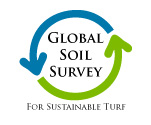Golf economic study now available
Interested in how golf stacks up to other industries in terms of its contribution to the economy, as well as to environmental sustainability? The newly released California Golf Economic and Environmental Study, commissioned by the California Alliance for Golf, presents an in depth overview, available in summary format, or in detail in the 47 page full report. While its value is primarily to those of you in California, it is a good model for development of reports for other states as well.
The study's authors suggest the following uses for this information:
- Defining the range of core and enabled industries associated with the game of golf
- Demonstrating for policymakers the employment and revenue generating contributions of the golf industry to the state economy
- Building recognition of the golf industry as a significant business sector and a driver of the state's economic activity
- Demonstrating the golf industry's continued progress in resource conservation and environmental excellence
Global Soil Survey: Individualized Survey Report
Each participant in the Global Soil Survey will receive an individualized report that assesses current soil nutritional conditions at each of the three sampling locations from their facility. The report will be emailed in a printable, pdf format. Each report will contain the following information:
- Nutritional evaluation: All soils will be analyzed for 21 chemical measurements, including major and minor nutrients, pH and electrical conductivity (see list below) by Brookside Laboratories (New Bremen, OH). All data will be evaluated by Dr. Micah Woods of The Asian Turfgrass Center and Dr. Larry Stowell of PACE Turf . All data will be presented using both metric and U.S. units.
- Recommendations: The report will also quantify any nutrient deficits or excesses, and will provide recommendations on how to correct them.
- Documenting progress towards sustainability: The report will also calculate a sustainability index for each major nutrient at each of the three sampling sites. This numerical rating will document how close each soil nutrient is to the minimum identified in the MLSN guidelines, and how much lower that level can go before it reaches the minimum threshold. The sustainability index provides a great snapshot of the current condition of the soil, in terms of meeting minimal guidelines. But even more importantly, it sets a clearly defined benchmark against which you can track and quantify your progress towards sustainability over time.
- Tools for doing the right thing: While everyone wants their facility to reduce inputs, be more environmentally sensitive and generally more sustainable, it's not always clear how to approach these goals in a safe and responsible manner. Your personalized report will provide clear, science–based and data–based guidance on deficits, excesses and fertilizer requirements that will allow you to sensibly reduce inputs, without sacrificing turf quality or playability.
Parameters evaluated in Global Soil Survey reports
| Nitrate nitrogen (NO3–N) | pH |
| Ammonium nitrogen (NH4–N) | Electrical conductivity (EC) |
| Total nitrogen | Boron (B) |
| Phosphorus (Mehlich 3) | Iron (Fe) |
| Phosphorus (P–Bray) | Manganese (Mn) |
| Phosphorus (P–Olsen) | Copper (Cu) |
| P saturation index (PSI) | Zinc (Zn) |
| Potassium (K) | Aluminum (Al) |
| Calcium (Ca) | Chloride (Cl) |
| Magnesium (Mg) | |
| Sulfur (S) | |
| Sodium (Na) |
Analytical methods used
All chemical analyses are conducted by Brookside Laboratories, New Bremen, Ohio
Electrical conductivity (1:2) converted to saturated paste equivalent, 1:2 soil method. Reference: Soil, Plant and Water Reference Methods for the Western Regions S-2.210, 2003. Values converted to saturated paste equivalent using following equation: Saturated paste equivalent EC dS/m=2.1 X (1:2 EC dS/m) + 0.5)
pH (1:1 in water). Reference: McLean, E.O. 1982. Soil pH and lime requirement. in Page, A.L. ed. Methods of soil analysis, part 2. Agronomy Monograph 9, 2nd ed. American Society of Agronomy and Soil Science Society of America, Madison, WI; pp. 199-223.
Mehlich III extractable sulfur, calcium, magnesium, potassium, sodium, phosphorus, boron, iron, manganese, copper, zinc, aluminum, chloride. Reference: Mehlich, A. 1984. Mehlich-3 soil test extractant: a modification of Mehlich–2 extractant. Comm. Soil Sci. Plant Anal. 15:1409-1416.
Inorganic nitrogen (1 N KCl cadmium reduction). Reference: Dahnke W.C. 1990. Testing soils for available nitrogen. Westerman, R.S. ed. Soil testing and plant analysis. Soil Sci. Soc. Am. Book Series 3, Agronomy Society of America, Madison, WI; 1996: 961-1010.
Bray II Phosphorus. Reference: Bray, H.R. and L.T. Kurtz. 1945. determination of total, organic, an available forms of phosphorus in soils. Soil Science 59:39-45.
Olsen Phosphorus:. Reference: Olsen, S.R. and L.E. Sommers. 1982. Phosphorus. Page, A.L. eds. Methods of soil analysis, part 2. Agronomy Monograph 9, 2nd ed. American Society of Agronomy and Soil Science Society of America, Madison, WI; 1982: 403-430.
Art Wilson Company Provides Additional Information on Calcium Sulfate
To read the report provided to PACE Turf by Art Wilson Company, click here.





